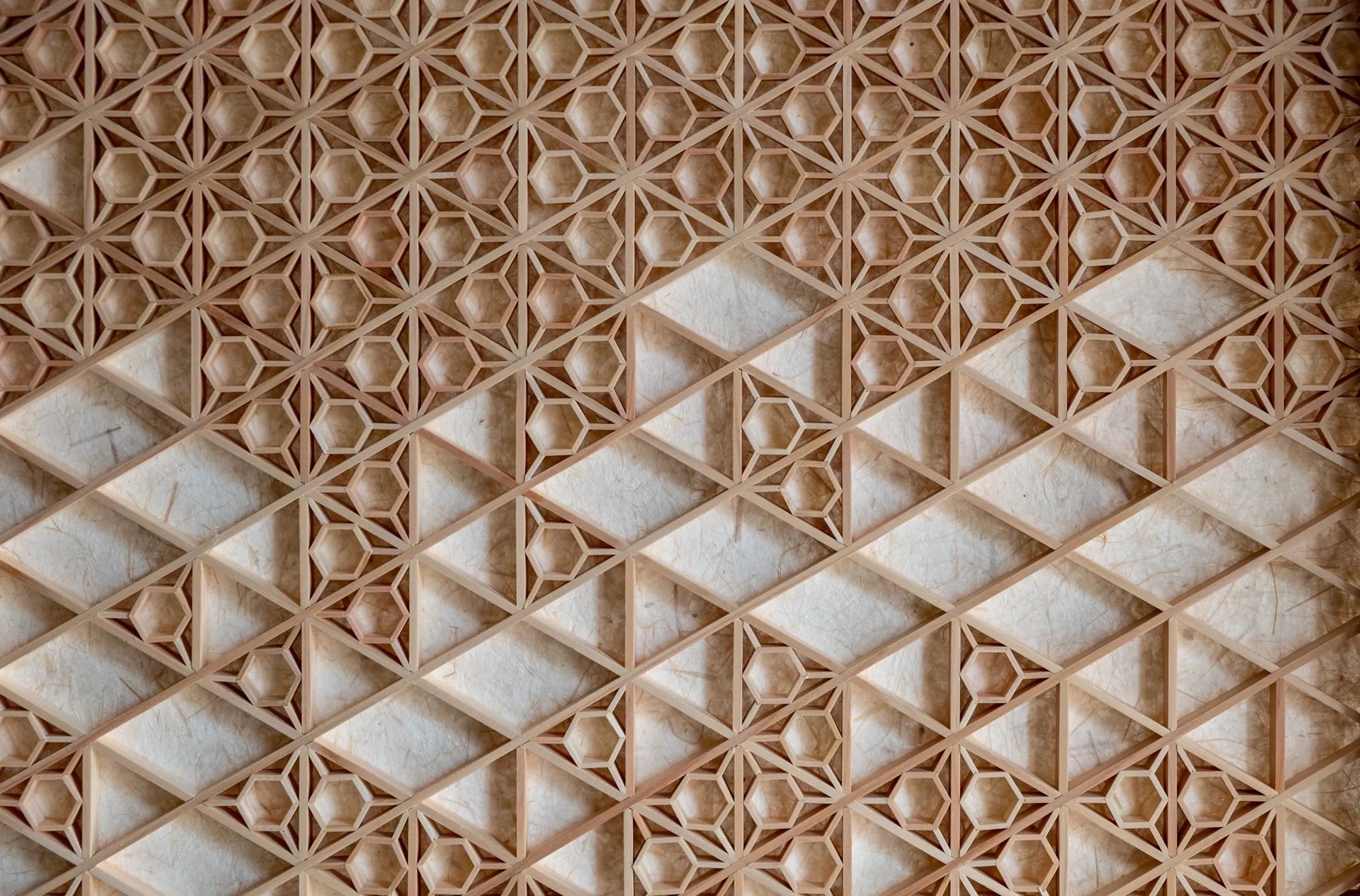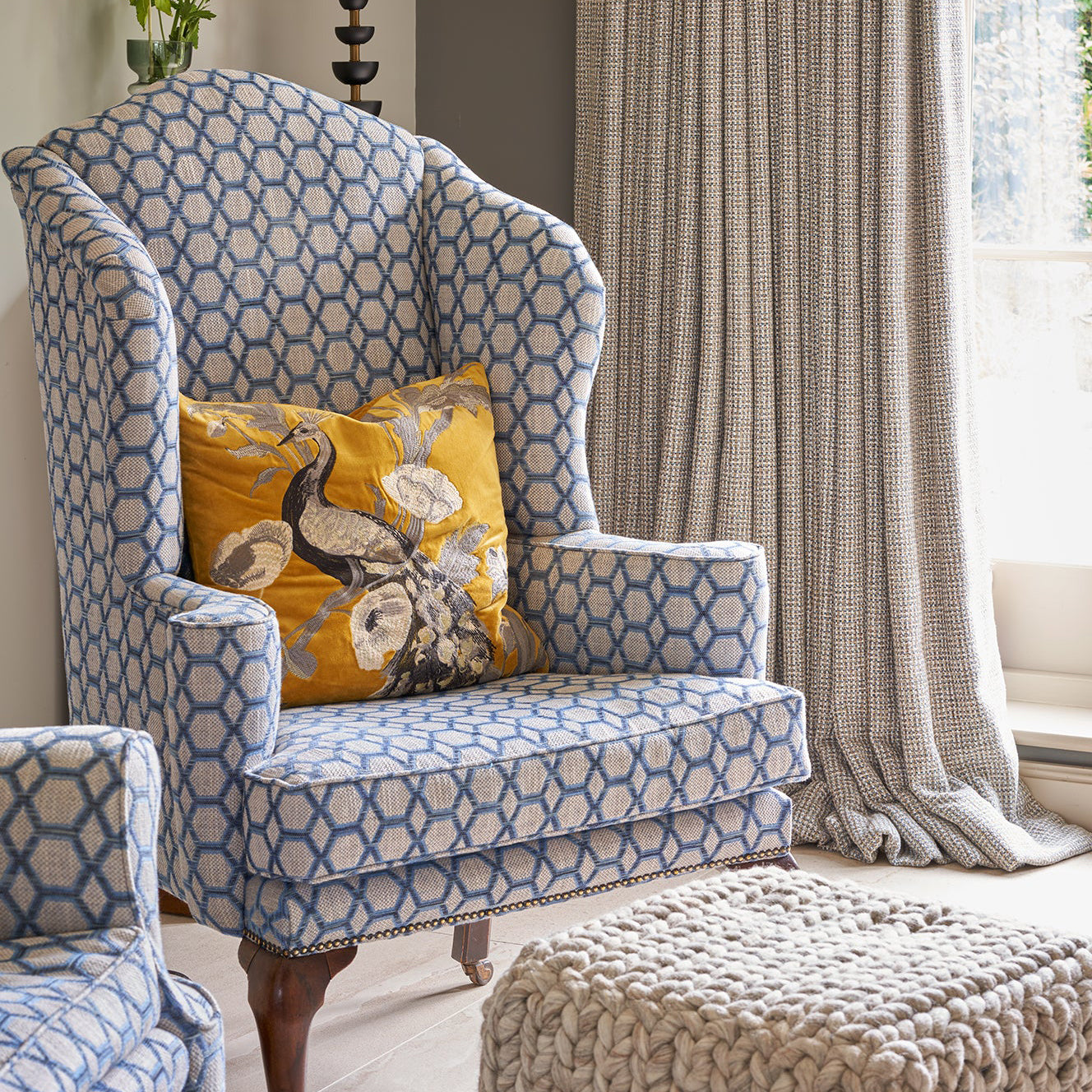MUSINGS, INSPIRATIONS, RECIPES, FEATURES & MORE
LATEST / INTERIORS INSPIRATION / COUNTRY & PERIOD HOUSE GUIDES / MUSINGS / SUSTAINABILITY / FEATURES / HEALTHY LIVING
EXPLORING JOINERY TRADITIONS AROUND THE WORLD
Joinery transcends mere technique; it is a cultural tapestry woven from diverse traditions, materials, and philosophies. From the intricate latticework of Japan to the robust mortise and tenon assemblies of Europe, joinery practices across the globe offer a fascinating glimpse into the unique craftsmanship and ingenuity of different cultures.

An example of kumiko joinery from Big Sand Woodworking
EAST ASIA: A SYMPHONY OF PRECISION AND HARMONY
Japan: Renowned for their meticulous attention to detail and emphasis on minimalism, Japanese joinery embodies the philosophy of "wabi-sabi," appreciating the beauty of imperfection and impermanence. Traditional techniques like kumiko, intricate geometric wood latticework, and shoji, translucent paper screens held by delicate wooden frames, showcase the artistry and functionality inherent in Japanese joinery. Notably, Japanese carpentry often avoids the use of nails or glue, relying instead on meticulously crafted interlocking joints like the tsugime and kanawame joints, ensuring structural integrity and aesthetic harmony.
China: With a rich history dating back millennia, Chinese joinery is characterised by its robust construction and emphasis on symbolism. Traditional techniques like jiazhuang, a complex framework of interlocking beams and brackets, and zhudiao, decorative carvings often depicting auspicious symbols, showcase the strength and artistry of Chinese joinery. Notably, the use of tongcao, a type of interlocking joint that expands and contracts with humidity changes, demonstrates the Chinese understanding of wood's natural properties and their integration into joinery practices.
Korea: Characterised by its emphasis on simplicity, functionality, and natural materials, Korean joinery emphasises clean lines and avoids excessive ornamentation, reflecting the overall aesthetic principles of Korean traditional architecture. Traditional techniques like yeoksam, connect beams and posts at right angles, providing strong lateral support. And Jebi-chok creates a seamless corner by precisely angled cuts on two pieces of wood, often used in window frames and doors.
EUROPE: A LEGACY OF STRENGTH AND ADAPTATION
Europe: European joinery traditions reflect a blend of influences, from the classical techniques of the Greeks and Romans to the regional adaptations and innovations of various cultures. Mortise and tenon joints, dovetail joints, and wedges are common features across Europe, often combined with regional variations like the French half-lap joint and the Scandinavian bridle joint. The use of oak and other hardwoods, along with the development of guilds that preserved and transmitted joinery knowledge, contributed to the enduring legacy of European joinery in furniture making, shipbuilding, and construction.
THE MIDDLE EAST AND NORTH AFRICA: A FUSION OF FUNCTIONALITY AND AESTHETICS
The Middle East and North Africa: Joinery traditions in this region are characterised by their intricate geometric patterns, use of exotic hardwoods, and emphasis on functionality. Mashrabiya, intricate latticework often used for windows and balconies, provides shade and privacy while maintaining air circulation. Marquetry, the art of applying small pieces of wood to create intricate patterns, is another hallmark of Middle Eastern joinery, adding decorative flair to furniture and architectural elements. Notably, the use of joinery techniques in shipbuilding played a crucial role in the maritime trade and cultural exchange throughout the region's history.
AFRICA: A DIVERSE LANDSCAPE OF INGENUITY AND ADAPTATION
Africa: The African continent boasts a rich and diverse tapestry of joinery traditions, reflecting the unique materials, environments, and cultural practices of various communities. Palm, teak, and other indigenous woods are commonly used, often combined with natural fibers like raffia and sisal for added strength and flexibility. Techniques like lap joints, dowel joints, and woven wood structures showcase the ingenuity and adaptability of African joinery practices. Notably, the use of joinery in the construction of traditional dwellings like roundhouses and mudbrick structures demonstrates the integral role joinery plays in shaping African vernacular architecture.
THE AMERICAS: A BLEND OF INDIGENOUS TRADITIONS AND EUROPEAN INFLUENCES
The Americas: Joinery traditions in the Americas reflect a blend of indigenous practices and European influences. Indigenous communities employed various joinery techniques using local materials like bamboo, reeds, and hardwoods. European settlers brought their own joinery traditions, adapting them to the available materials and local needs. Notably, the use of joinery in shipbuilding played a crucial role in exploration, colonisation, and cultural exchange throughout the Americas.
Joinery, while rooted in the fundamental principles of connecting wood, transcends mere technique. It serves as a window into the cultural values, ingenuity, and adaptation of different societies. From the intricate artistry of Japanese kumiko to the robust construction of European half-lap joints, each joinery tradition tells a unique story, reflecting the diverse tapestry of human creativity and craftsmanship across the globe. As we continue to explore and learn from these diverse traditions, we gain a deeper appreciation for the enduring legacy of joinery and its potential to shape the future of building and design.




